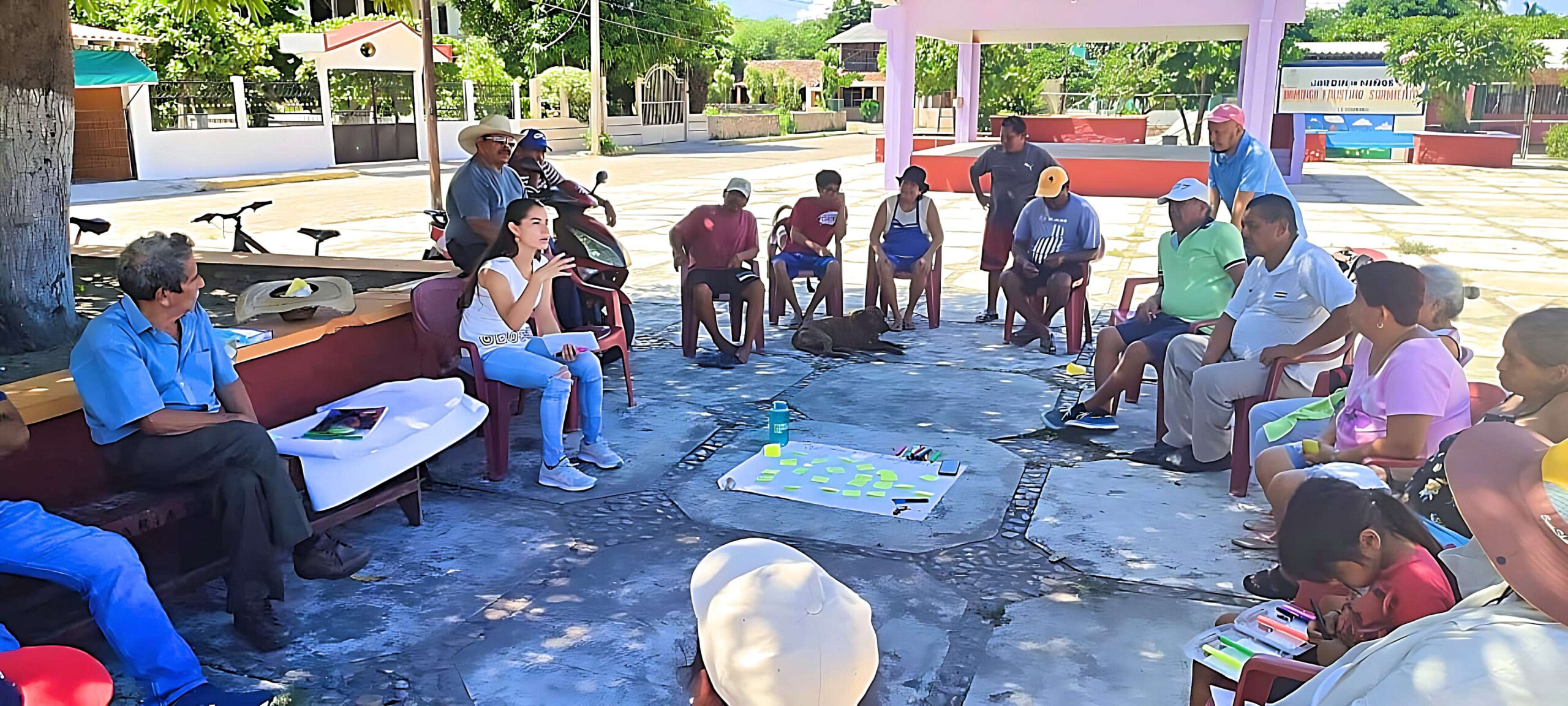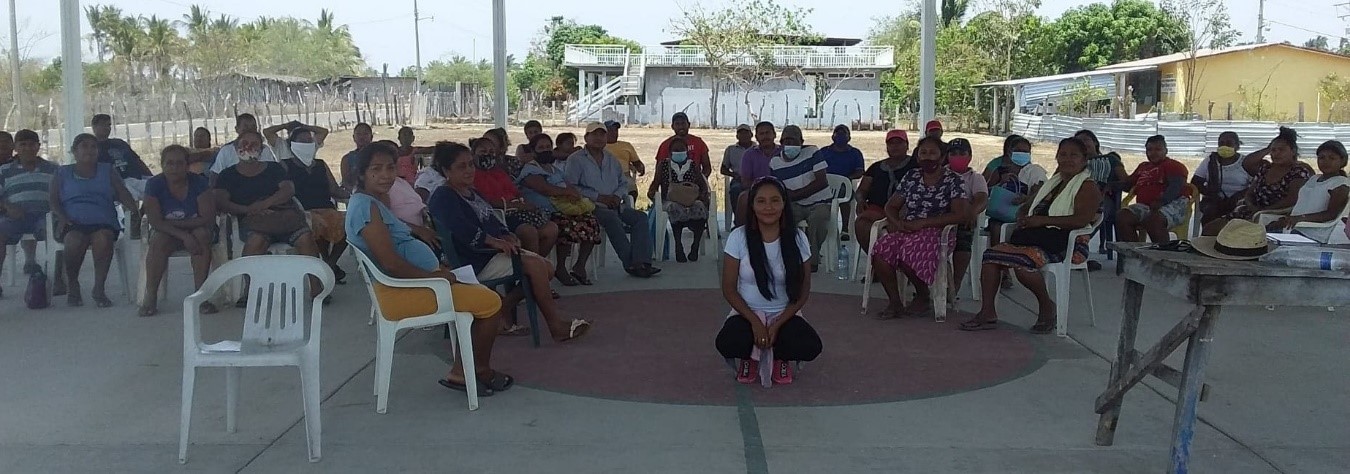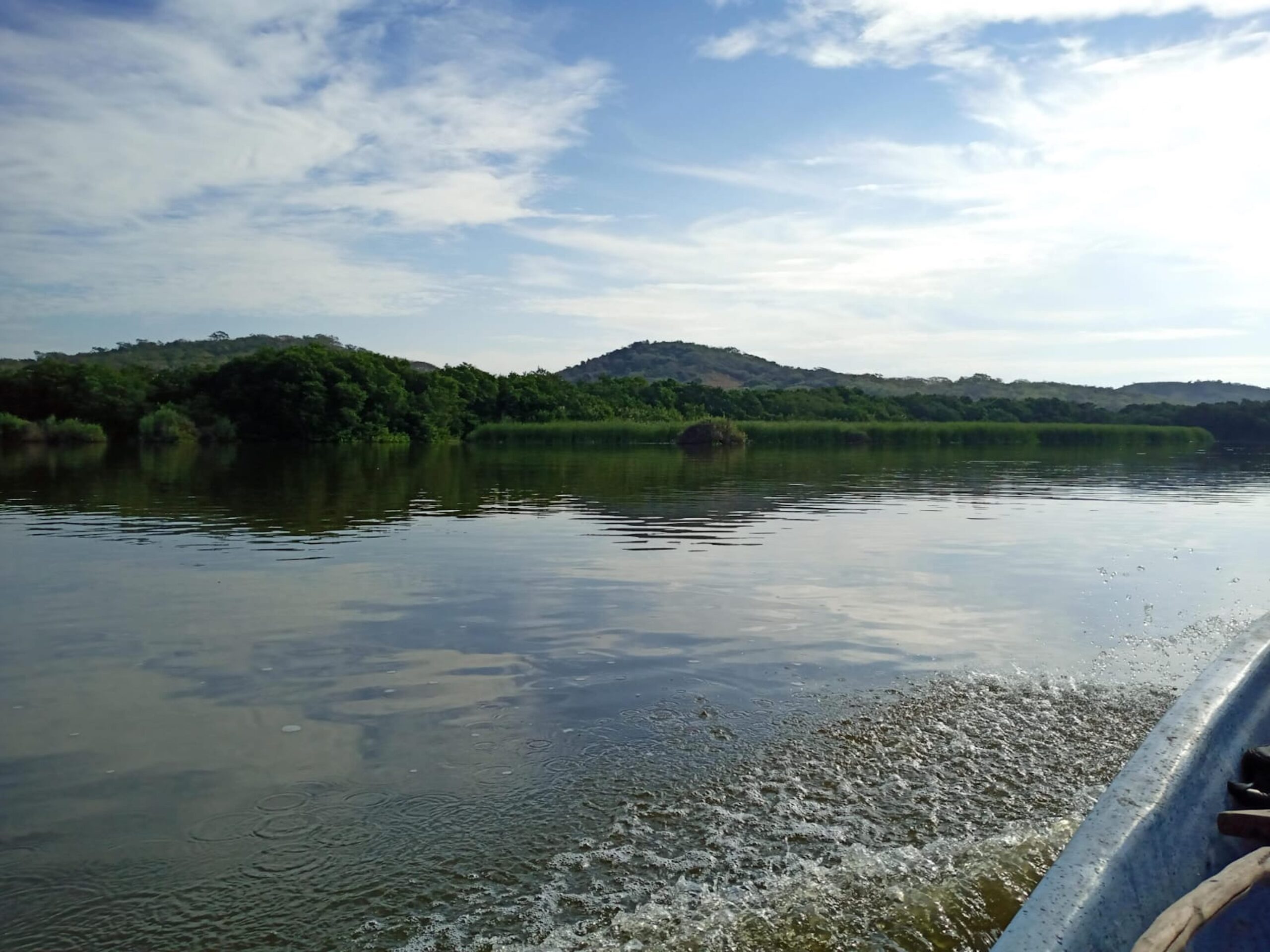by Carolina Gallo Cardona
coeditores:
-dr. ulises moreno tabarez;
-dra. dulce maría quintero romero;
-dr. Héctor Becerril;
-dra. rocio lopez velasco
The rapid urbanization on the coasts of Guerrero, particularly that of Acapulco, is a core factor that contributes to environmental problems in the region, which affects the coastal marine ecosystems, including mangroves. In this context, the conservation of mangroves and wetlands becomes essential to promote sustainable development and safeguard the strategic ecosystems of the planet. In this blog, I share my experience in developing the thesis project for my master’s degree in Sustainable Development Management that I am currently pursuing. The objective of my project is to build ecological conservation strategies for mangroves, based on community participation, in the locality of El Carrizal, Coyuca de Benítez, in the state of Guerrero, approximately 60 kilometers from Acapulco. This region is known for its mega-diversity, with a great variety of species of fauna, flora, and ecosystems that make their territories beautiful and culturally rich, inhabited largely by Afro-descendant communities who are cheerful, friendly, and welcoming. However, this region of Mexico suffers from social problems such as corruption, inequality, drug trafficking, poverty, and insecurity that disrupt the quality of life of its inhabitants. At the same time, it suffers from environmental problems such as inadequate solid waste management, the lack of wastewater treatment, among others, which contribute to the deterioration of the region’s ecosystems.
Mangroves are coastal marine ecosystems located in the tropics and subtropics of the planet, and are considered to be some of the most productive ecosystems in the world according to the ramsar convention (2018). Their productivity is related to the ecosystem services they provide. For example, conabio (2021) mentions that mangroves act as natural flood control systems and barriers against hurricanes and saltwater intrusion, control erosion and protect coasts, improve water quality by acting as a biological filter, maintain sedimentation processes, capture carbon, and serve as a refuge for wild flora and fauna, among others. However, despite their high value, over time they have been affected by anthropogenic activities such as agriculture, livestock farming, and deforestation, which have resulted in the loss and deterioration of biodiversity and a decrease in environmental goods and services, which in turn have an impact on sustainable development of the territory.
Based on the above, my main interest in this work is to co-construct conservation and ecological restoration strategies for mangroves with community participation, countering the negative impacts on ecosystems that are degraded or threatened. Through this work, I aim to contribute theoretically, methodologically, and practically to support these ecosystems that are in a state of deterioration in El Carrizal. The project addresses the environmental, social, and economic aspects of sustainable development and creates spaces for education and the exchange of knowledge to encourage the adoption of more environmentally friendly practices.
What is happening with mangroves?
Through capitalist development processes, most people have inappropriately appropriated the environment, resulting in environmental degradation and depletion of its resources. Eschenhagen (2010) argues that hegemonic knowledge often makes it impossible to see the complexity of environmental problems, resulting in inappropriate and destructive ways of appropriating natural resources. In Mexico, for example, according to the World Bank (2019), 60% of the total mangrove surface area has been deforested, resulting in environmental deterioration that affects the local, regional, and global population. Specifically, Ressl, R. (2008) argues that in 1979, the state of Guerrero had 16,347 hectares of mangroves, but over time and with the loss of these ecosystems, by 2005, the state had only 8,434 hectares, meaning a loss of 7,918 hectares (62.9%) of this type of coverage. Approximately half of the mangrove soils in the state of Guerrero disappeared (see Table 1).
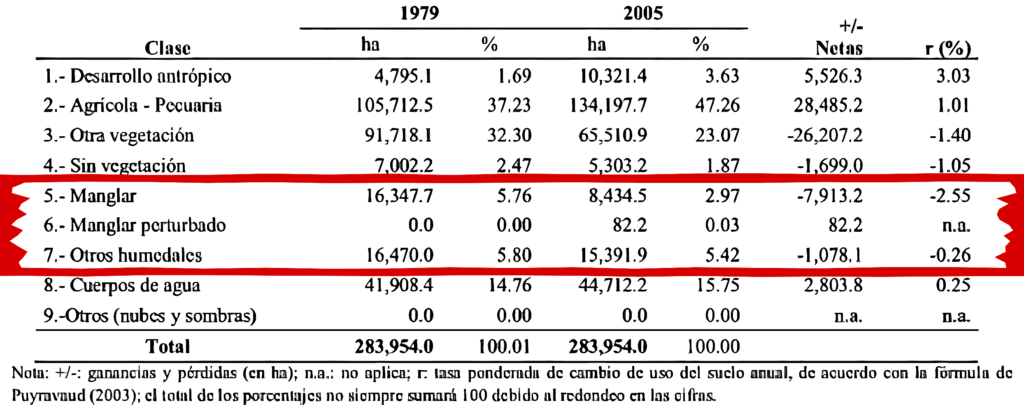
In El Carrizal, the deterioration of mangroves is evident; the destruction of these strategic ecosystems is mainly a consequence of anthropogenic activities such as livestock, extensive agriculture, indiscriminate logging, inadequate management of solid waste, and forest fires. This has resulted in the loss of biodiversity, mangrove desiccation, and a reduction in environmental goods and services. In addition, the strong conditions of inequality that characterize the region encourage pressure to change land use in some mangrove areas (UNDP, 2004) in order to generate greater dynamics in productive and economic activities that help meet the needs of the community.
What are we doing?
With the purpose of contributing to the sustainable development of their locality and the care of their environment, the community has been a protagonist in all the activities that have been carried out to date, as active agents of the territory. I perceive the El Carrizal community as friendly and joyful people, with a tradition of sharing both their stories and their food; they always welcome me with a smile, in a respectful and welcoming way. With their participation, first, I conducted a tour to make a small initial diagnosis of the ecosystem. Second, I identified key actors from different sectors of the community to conduct a survey on their perception of environmental issues, challenges, and opportunities. Third, I conducted participatory workshops in two different groups, the adult community and high school students, co-producing and exchanging knowledge about mangroves.
I used qualitative research methodologies, which involves the collection and analysis of non-numerical information to understand opinions and experiences through dialogue and participation between researchers and the community. In addition, aiming to propose solutions and alternatives to the studied problem, I have always assumed that it is a dynamic reality, relying on direct observation, seeking perspectives, and descriptive discovery.
Below, I detail the activities that have been carried out with the community:
participant observation
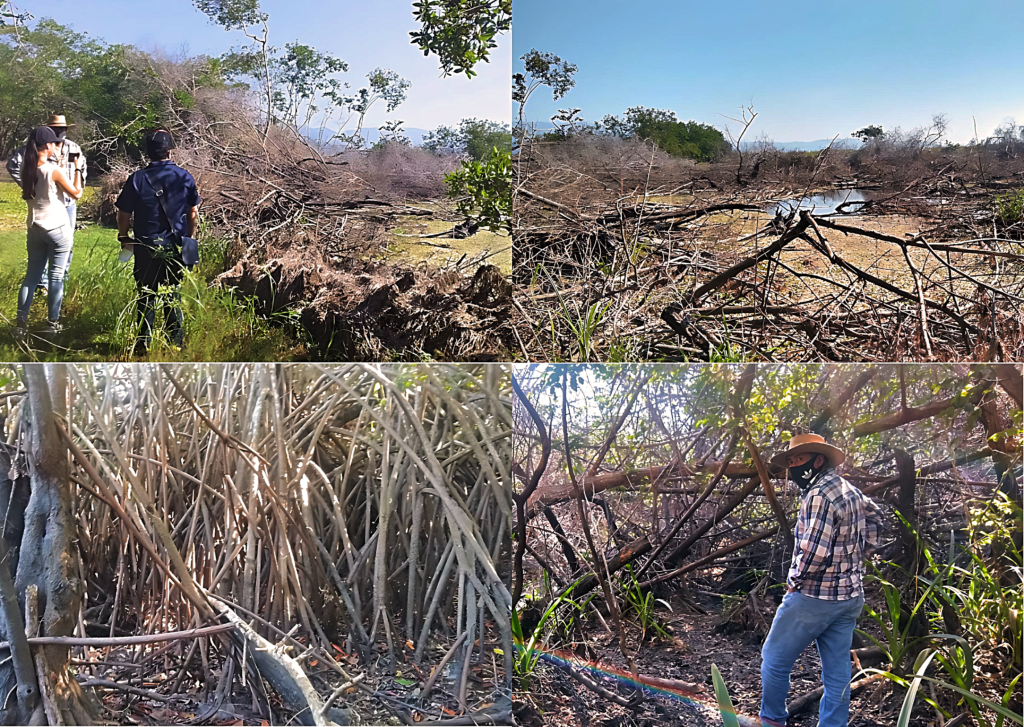
Initially, I visited the field site, the mangrove forest located in Playa El Carrizal, where I conducted a reconnaissance tour of the area, observing the current situation of the wetland in a participatory manner. Here, Mr. Rafael Galeano, former ejido commissioner, told me about a forest fire in 2021, where several hectares of mangroves were burned. The origin is unknown, but among the community’s versions, it is said to have been caused to gain land and be used in activities such as agriculture, or that a garbage fire got out of control. I observed a deteriorated ecosystem, forgotten by the inhabitants of the area and surrounded by activities such as palm crops and poor waste management.
Semi-structured interviews
Subsequently, I approached the community a little more through semi-structured interviews, with flexibility to make it seem like a pleasant conversation, in person and virtually with key actors. With the purpose of identifying their perspective on the environmental issues facing mangroves, the main challenges and opportunities they recognize. I heard the voice of the academy through Benjamin Elias Gopherus, professor and researcher at the Autonomous University of Guerrero with extensive experience researching mangroves; the voice of Tonatiuh Hernandez Mojica, consultant with experience in the municipality of Coyuca de Benitez through several works and collaborations with actors particularly from the municipality; Manuel Galeano, ejidal commissioner in the town of El Carrizal (period 2022-2024), teachers from the local telesecondary school, among others. Through dialogue and responses to previously formulated questions, a set of data and information was generated that served as a baseline for understanding the problem and preparing workshops with the community.
Spaces for environmental education and awareness
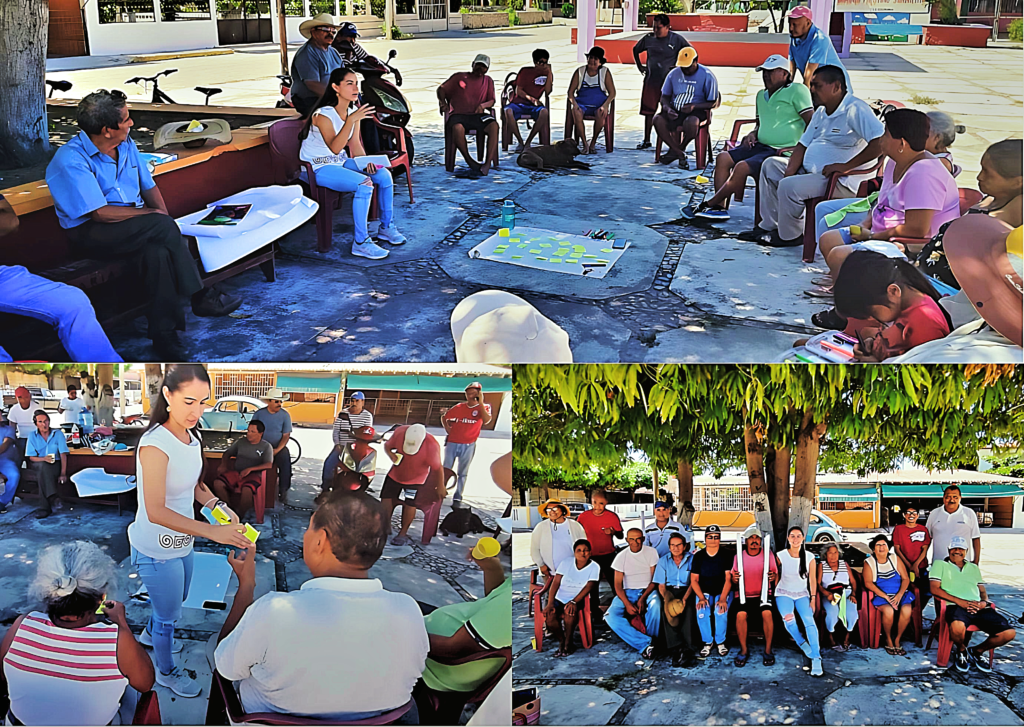
Environmental education aimed at communities is a tool that, if carried out properly, with clear objectives and planning, can lead to prior reflection on contexts, and then coherence in action. According to Eschenhagen (2010), knowledge is a way of relating to the world.
Together with the community, we generated spaces for environmental education using participatory techniques, aimed at the El Carrizal community. Transversely, I generated processes of reflection and awareness about the relevance of mangrove ecosystems in the environment and in the community. From my point of view, if there is no recognition of the goods and services provided by mangroves, it will not be possible for society to understand the need for their conservation.
When we talk about sustainability, future generations become more meaningful, out of solidarity in thinking that in the future all living beings can enjoy a healthy environment. It is important to disseminate information, raise awareness, and provide knowledge to children and young people about the care of natural resources and the ways in which we interact with them, so that new possibilities may emerge. Therefore, I developed participatory workshops with children who live in the study area and attend the Tenochtitlan telesecondary school located in El Carrizal.
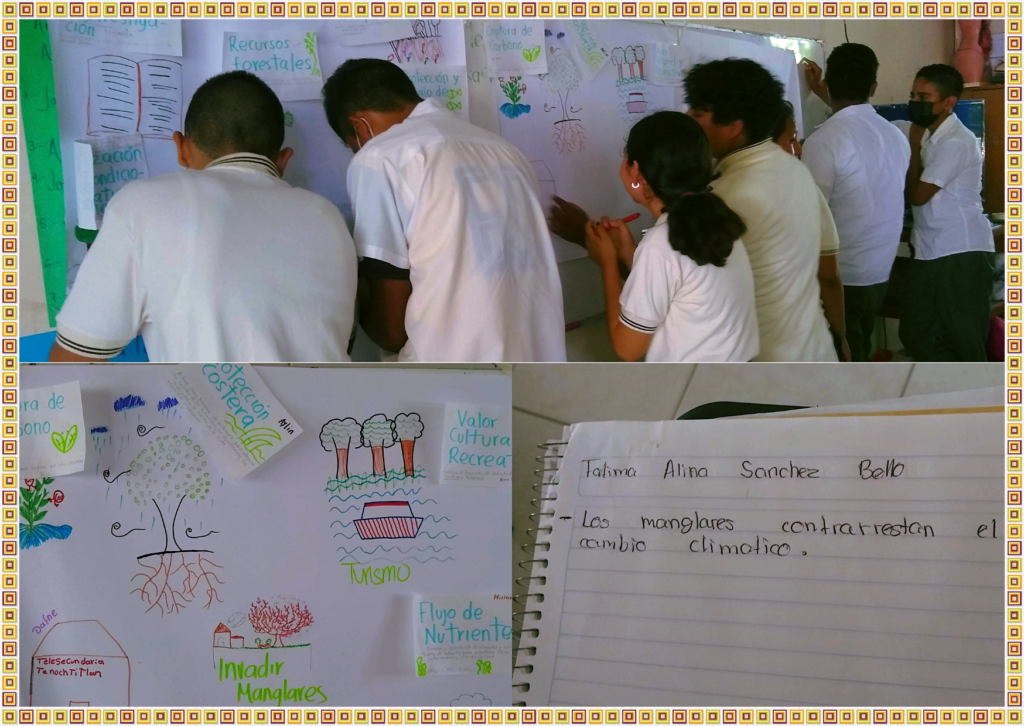
Where is the project headed?
After the previous activities in which we recognized the main problems affecting mangroves and strengthened our knowledge about the ecosystem goods and services they provide, the next step will be a participatory workshop for the collective construction of strategies for the conservation and restoration of mangroves in the area. Possible actions and programs will be proposed and adjusted to the possibilities and context, with input from the local residents. Additionally, we will compile these proposals and add other suggestions formulated from secondary sources and experiences.
Finally, the spaces for dialogue, sharing experiences, co-production of knowledge, and generating awareness provide a foundation for changing habits and actions in communities in favor of the conservation of natural resources. I seek to encourage residents to make informed decisions about their daily actions, causing minimal impact on the mangroves and recognizing their power to conserve and care for the environment that surrounds us.
references
banco mundial. (2019, january 17). cinco razones para cuidar los manglares. https://www.bancomundial.org/es/news/feature/2019/01/17/cinco-razones-para-cuidar-los-manglares
conabio. (2013, march 6). los manglares de méxico: estado actual y establecimiento de un programa de monitoreo a largo plazo: 2a y 3era etapas. comisión nacional para el conocimiento y uso de la biodiversidad. http://www.conabio.gob.mx/institucion/proyectos/resultados/infgq004.pdf
conabio, c. n. para el conocimiento y uso de la biodiversidad. (2021). manglares. https://www.biodiversidad.gob.mx/ecosistemas/manglares
convención de ramsar. (2018). perspectiva mundial sobre los humedales.
eschenhagen, m. l. (2010). desarrollo (sostenible) y educación ambiental superior, algunas consideraciones. universidad pontificia bolivariana, medellín, colombia.
gilman, e. l., ellison, j., duke, n. c., & field, c. (2008). threats to mangroves from climate change and adaptation options: a review. aquatic botany, 89(2), 237–250. https://doi.org/10.1016/j.aquabot.2007.12.009

